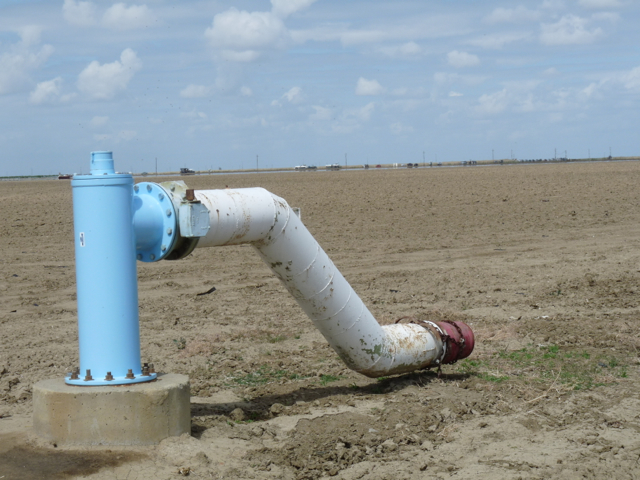UC Davis Drought Study Assesses Current Losses and Potential Future Impacts
Source: CDFA
A new report from the University of California, Davis, shows that California agriculture is weathering its worst drought in decades due to groundwater reserves, but the nation’s produce basket may come up dry in the future if it continues to treat those reserves like an unlimited savings account.
The UC Davis Center for Watershed Sciences study, released today at a press briefing in Washington, D.C., updates estimates on the drought’s effects on Central Valley farm production, presents new data on the state’s coastal and southern farm areas, and forecasts the drought’s economic fallout through 2016.
The study found that the drought — the third most severe on record — is responsible for the greatest water loss ever seen in California agriculture, with river water for Central Valley farms reduced by roughly one-third. Groundwater pumping is expected to replace most river water losses, with some areas more than doubling their pumping rate over the previous year, the study said. More than 80 percent of this replacement pumping occurs in the San Joaquin Valley and Tulare Basin.
The results highlight California agriculture’s economic resilience and vulnerabilities to drought and underscore the state’s reliance on groundwater to cope with droughts. “California’s agricultural economy overall is doing remarkably well, thanks mostly to groundwater reserves,” said Jay Lund, a co-author of the study and director of the university’s Center for Watershed Sciences. “But we expect substantial local and regional economic and employment impacts. We need to treat that groundwater well so it will be there for future droughts.”
Other key findings of the drought’s effects in 2014:
- Direct costs to agriculture total $1.5 billion (revenue losses of $1 billion and $0.5 billion in additional pumping costs). This net revenue loss is about 3 percent of the state’s total agricultural value.
- The total statewide economic cost of the 2014 drought is $2.2 billion.
- The loss of 17,100 seasonal and part-time jobs related to agriculture represents 3.8 percent of farm unemployment.
- 428,000 acres, or 5 percent, of irrigated cropland is going out of production in the Central Valley, Central Coast and Southern California due to the drought.
- The Central Valley is hardest hit, particularly the Tulare Basin, with projected losses of $810 million, or 2.3 percent, in crop revenue; $203 million in dairy and livestock value; and $453 million in additional well-pumping costs.
- Agriculture on the Central Coast and in Southern California will be less affected by this year’s drought, with about 19,150 acres fallowed, $10 million in lost crop revenue and $6.3 million in additional pumping costs.
- Overdraft of groundwater is expected to cause additional wells in the Tulare Basin to run dry if the drought continues.
- The drought is likely to continue through 2015, regardless of El Niño conditions.
- Consumer food prices will be largely unaffected. Higher prices at the grocery store of high-value California crops like nuts, wine grapes and dairy foods are driven more by market demand than by the drought.
If the drought continues for two more years, groundwater reserves will continue to be used to replace surface water losses, the study said. Pumping ability will slowly decrease, while costs and losses will slowly increase due to groundwater depletion. California is the only state without a framework for groundwater management.
“We have to do a better job of managing groundwater basins to secure the future of agriculture in California,” said Karen Ross, Secretary of the California Department of Food and Agriculture, which largely funded the UC Davis study. “That’s why we’ve developed the California Water Action Plan and a proposal for local, sustainable groundwater management.”
Failure to replenish groundwater in wet years continues to reduce groundwater availability to sustain agriculture during drought — particularly more profitable permanent crops, like almonds and grapes — a situation lead author Richard Howitt of UC Davis called a “slow-moving train wreck.”












